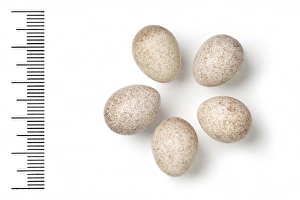Pallass Grasshopper Warbler Collection
The Pallas's Grasshopper Warbler, scientifically known as Locustella certhiola ssp centralasiae, is a fascinating bird species found in Kazakhstan and Russia
All Professionally Made to Order for Quick Shipping
The Pallas's Grasshopper Warbler, scientifically known as Locustella certhiola ssp centralasiae, is a fascinating bird species found in Kazakhstan and Russia. Also referred to as Helopsaltes certhiola, this small passerine bird belongs to the family of grass warblers. With its distinctive appearance and unique vocalizations, the Pallas's Grasshopper Warbler stands out among its avian counterparts. Its plumage features a mix of brown and olive tones that provide excellent camouflage within its natural habitat. This secretive bird prefers dense vegetation such as reed beds or thickets where it can easily hide from predators. One of the most remarkable aspects of this warbler is its song. Despite being quite elusive, the male Pallas's Grasshopper Warbler produces a loud and complex song that resembles the buzzing sound made by grasshoppers – hence its name. This intricate melody serves both for territorial defense and attracting potential mates during breeding season. Breeding primarily takes place in open areas with scattered bushes or tall grasses near wetlands. The female constructs a well-hidden nest on or near the ground using plant materials like leaves and stems. Once hatched, both parents actively participate in feeding their young with insects they catch while foraging low to the ground. Although not considered endangered globally, local populations may face threats due to habitat loss caused by human activities such as agriculture expansion or drainage of wetlands for development purposes. Conservation efforts are crucial to ensure these beautiful birds continue thriving in their native range. Encountering a Pallas's Grasshopper Warbler is an exciting experience for any bird enthusiast venturing into Kazakhstan or Russia's vast landscapes. From its cryptic plumage to its mesmerizing song, this species exemplifies nature's diversity and reminds us of our responsibility to protect these delicate ecosystems for future generations to appreciate their beauty too.

